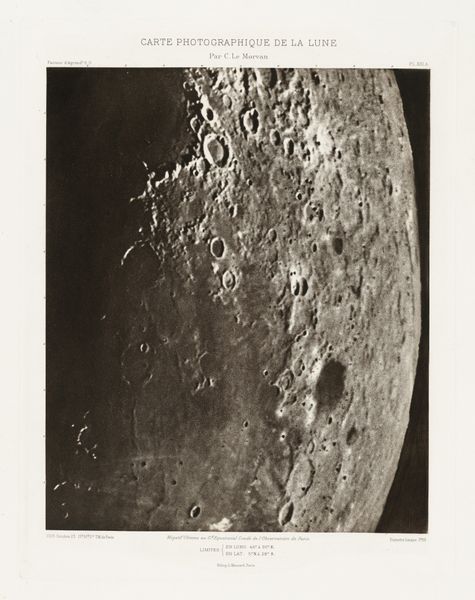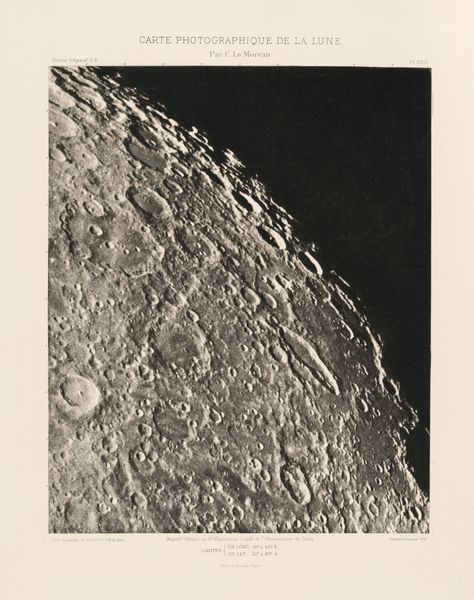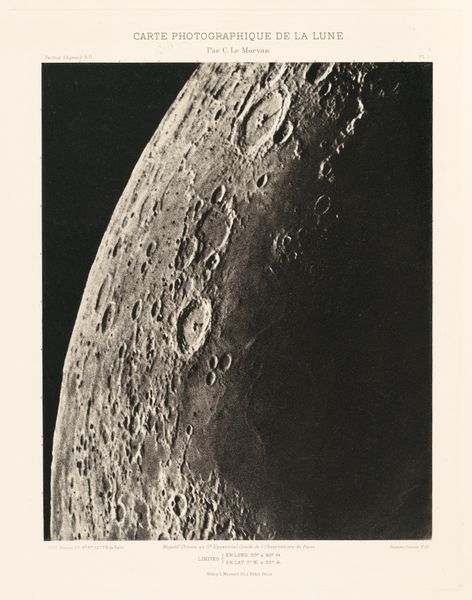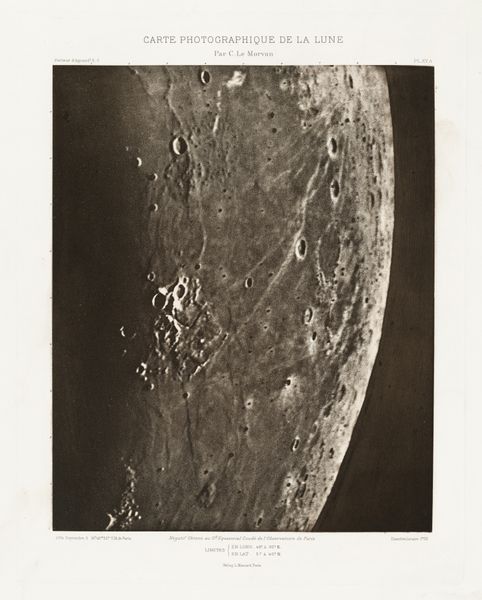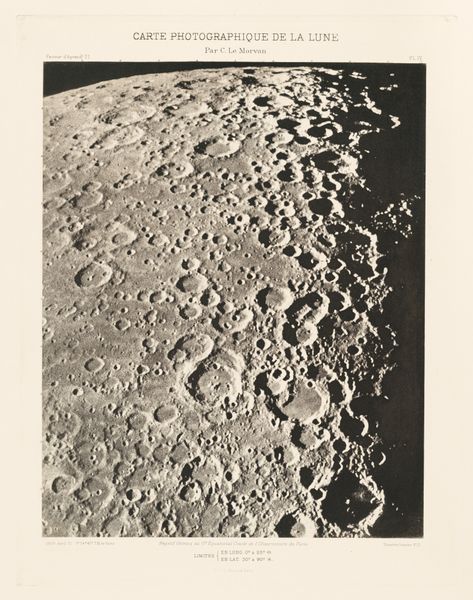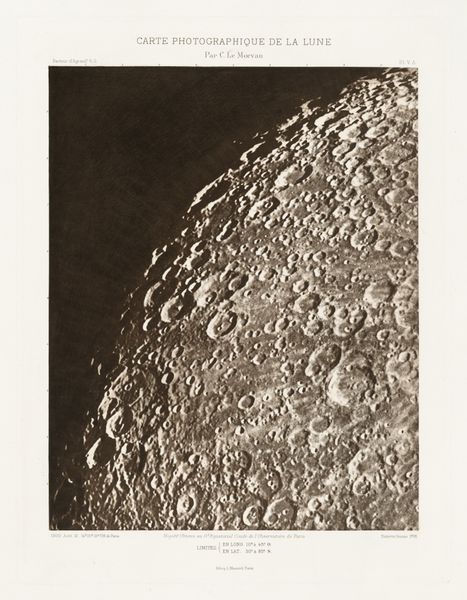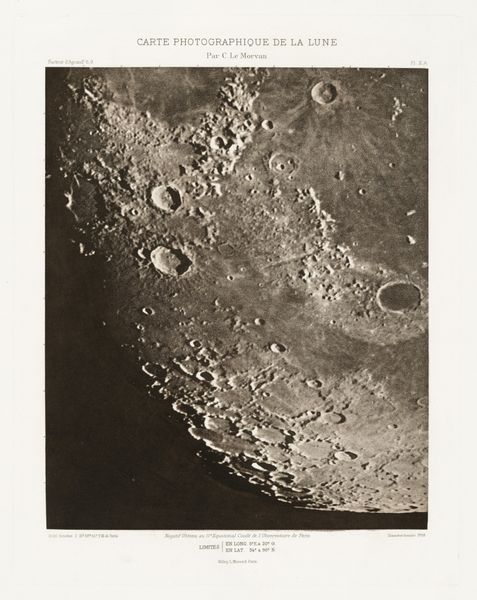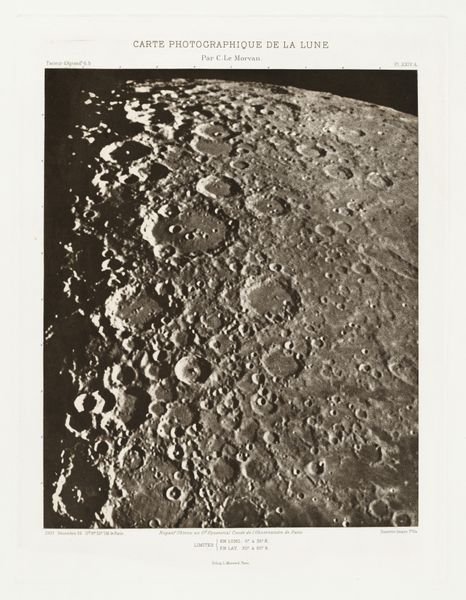
Carte photographique de la lune, planche VII (Photographic Chart of the Moon, plate VII) Possibly 1909 - 1914
0:00
0:00
print, photography
# print
#
landscape
#
photography
Dimensions: image: 31.1 × 25.5 cm (12 1/4 × 10 1/16 in.) plate: 38.9 × 29.5 cm (15 5/16 × 11 5/8 in.) sheet: 49 × 37.9 cm (19 5/16 × 14 15/16 in.) tissue: 42.55 × 37.47 cm (16 3/4 × 14 3/4 in.)
Copyright: National Gallery of Art: CC0 1.0
This is plate VII from Charles Le Morvan's photographic chart of the moon, made in the late 19th or early 20th century. I think about how much skill goes into a photo like this, all the technical details, the right exposure, the development, but also the gaze, the vision behind it. Look at the texture of the moon’s surface, it's incredible! It's like a painting made of light and shadow. All those craters create a topography of bumps and hollows, like thick impasto in grayscale. My eye is drawn to the large crater, how the light caresses its contours. It's a reminder that even something as seemingly static as the moon is always changing, always in process, just like a painting. I find myself thinking about artists like Vija Celmins, who painstakingly rendered the night sky and celestial bodies with graphite. There’s a similar sense of wonder and meticulous observation, a deep engagement with the material world, or in this case, the lunar world. Ultimately, art is about how we see and interpret the world, and photographs like this one give us new ways of looking, new ways of thinking.
Comments
No comments
Be the first to comment and join the conversation on the ultimate creative platform.
